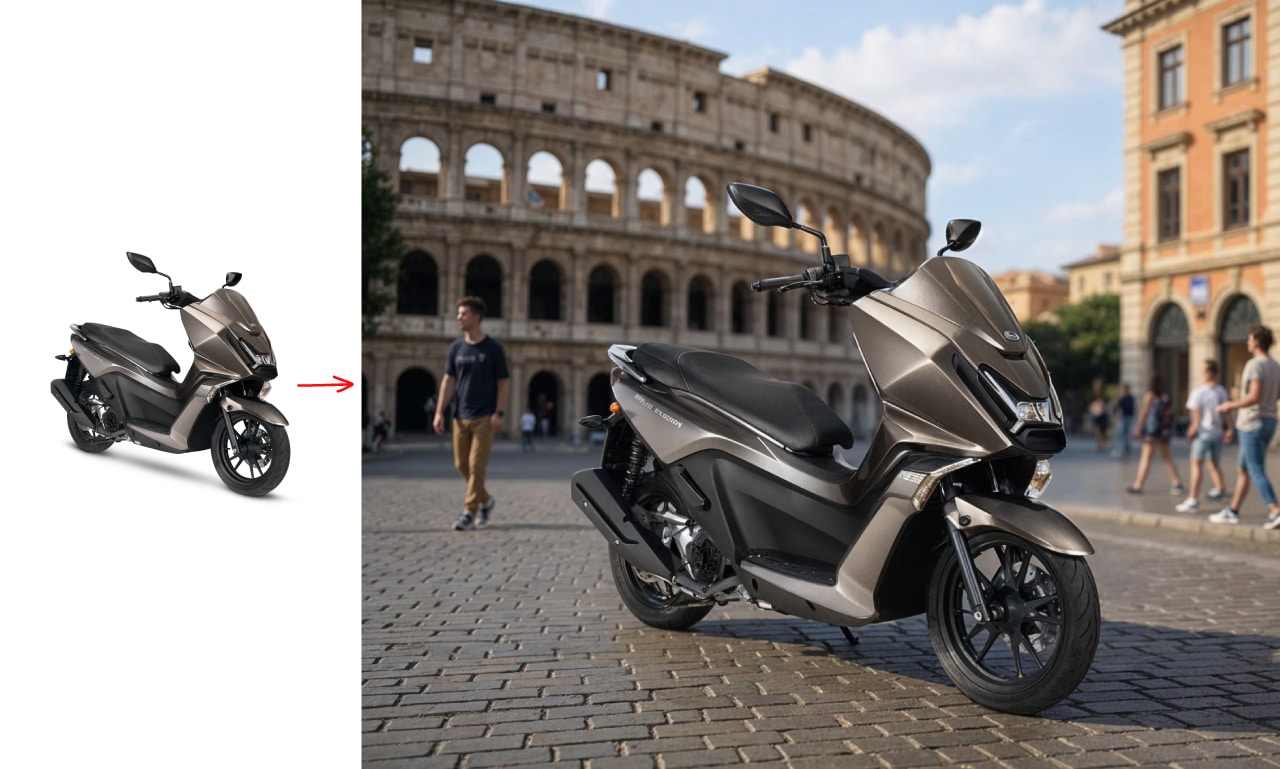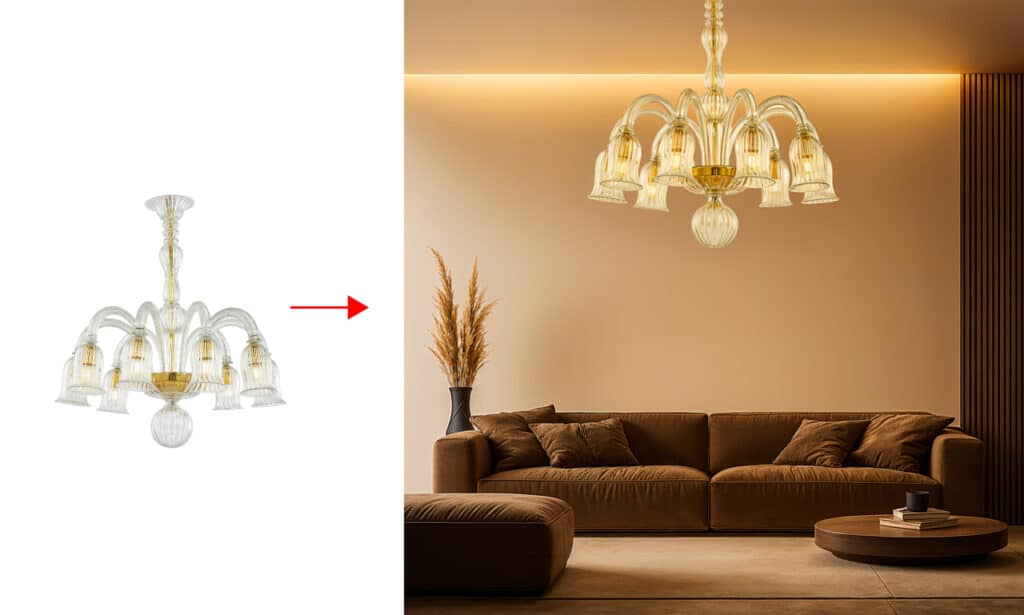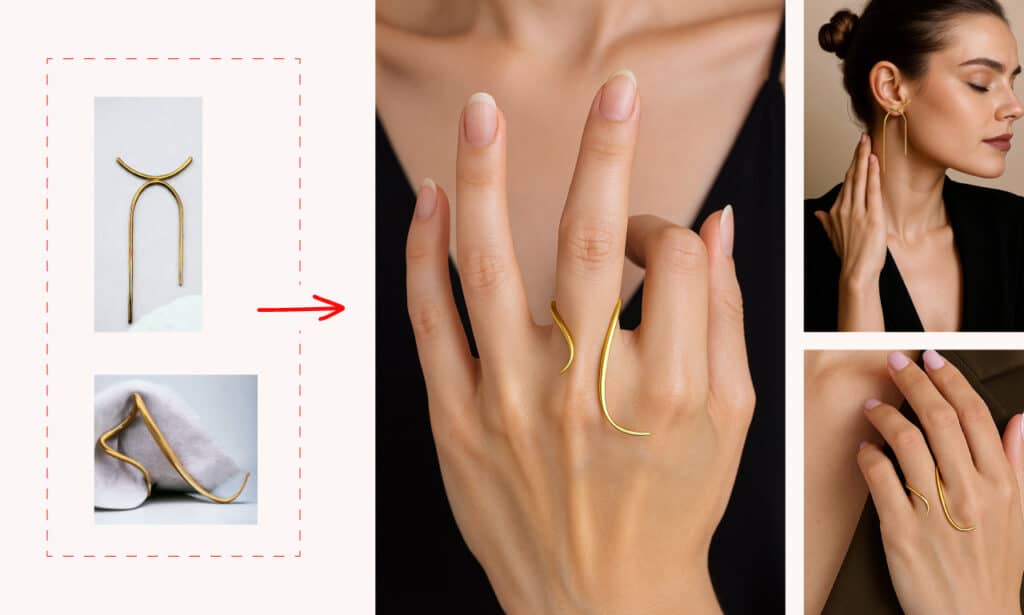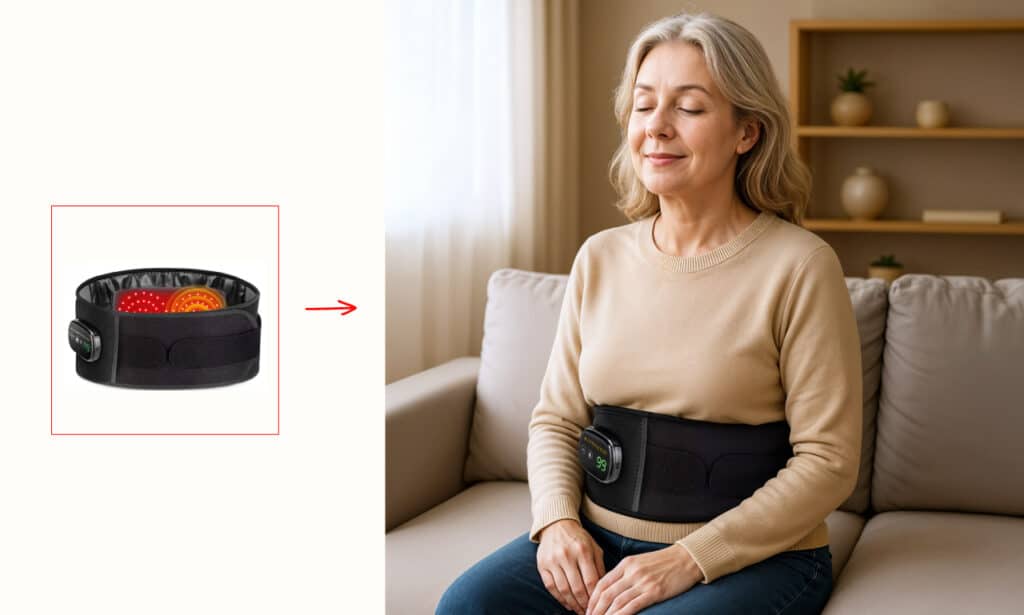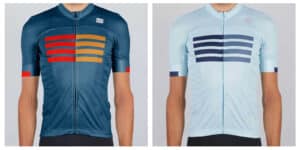1. The New Frontier of Visual Marketing
From Cut-Out Image to the Perfect Scene (with AI)
In the world of e-commerce and visual marketing, product image is everything. But in recent years, something has changed: thanks to generative Artificial Intelligence, we can now create photorealistic settings around a product photographed on a neutral background, without the need for expensive sets, real locations, or professional models.
Imagine having a cut-out photo of a pair of shoes, a watch, a handbag, or a piece of furniture. AI can place that object in consistent, realistic, and eye-catching environments: a designer loft, a sunset beach, a boutique shelf, or a luxury restaurant table.
With AI, you cut costs
- No more renting locations or photo studios
- No more casting or hiring models
- No extra equipment needed for the scene (lights, props, styling)
👉 Result: you get a striking, professional image at a fraction of the cost of a traditional photoshoot, with endless possible variations (colors, mood, seasonal context, etc.).
2. The Essential Features for a Realistic Result
How to Create Settings That Look Real (and Truly Sell)
To make an AI-generated scene truly effective, a generic prompt isn’t enough. Realism depends entirely on attention to detail. Here’s what must not be missing:
Consistency of Light and Shadows: the product must "sit" naturally in the environment, with coherent shadows, reflections, and compatible lighting.
Correct Perspective: the product’s angle must be aligned with that of the generated environment.
Realistic Materials and Textures: backgrounds and surfaces must be photorealistic, without plastic or painterly effects.
No Distortion or Artifacts: deformed hands, impossible perspectives, or unrealistic elements ruin the image’s credibility.
When these factors are well managed, the result is astonishing: the client can no longer tell the rendering apart from a real photograph.
3. Dynamic Staging = Visual Storytelling
Sell an Idea, Not Just a Product
A staged image has a narrative power that goes beyond the simple technical description of the product. With AI, you can tell a visual story: you’re not just selling an armchair, but the idea of comfort in an elegant home. You’re not just showing a face cream, but a moment of relaxation in a luxurious bathroom.
Here are some examples of visual storytelling you can achieve with AI staging:
- A perfume placed on a wooden dresser with golden light: evokes warmth, elegance, exclusivity
- A pair of sneakers in a modern room with street art posters: conveys energy, urban style, dynamism
- A bottle of wine on a set outdoor table: suggests conviviality, nature, special moments
👉 AI doesn’t just create backgrounds: it creates emotions.
4. Tailored Customization: The Real Competitive Advantage
Every target audience has its ideal environment
One of the most powerful advantages of generative AI is the ability to create different versions of the same product to suit different audiences.
Want to appeal to a young, sporty audience? Place the backpack in a camping scene or an urban setting. Prefer an elegant image for luxury clients? Use the same photo, but stage it in a minimalist interior with natural light.
With AI, you can test multiple visuals with A/B testing, and adapt the aesthetics for different markets, seasons, or channels (website, social media, ads, catalogs).
5. When to Use AI and When Not To
Ideal Use Cases (and Limitations to Consider)
Not every image requires AI intervention, but in many cases, it’s the ideal solution:
✅ Perfect for::
- Launching new products with still “flat” images
- Enhancing brand perception without photoshoot costs
- Quickly creating visuals for ads and social media
- Visual content for trade shows, catalogs, email campaigns
⛔ To Avoid If:
- You already have a photoshoot with models and real environments perfectly aligned with your brand
- Your product has highly reflective surfaces that make integration complex (in this case, it’s better to use dedicated 3D renders)
- The image requires real movement (e.g., moving liquids, genuine human interaction)
👉 In all other cases, AI is a strategic ally.
6. The Optimal Workflow: How It Works in Practice
From the product photographed on a white background to the final image
Here is an overview of the ideal process, step by step:
- Photo of the product on a neutral background, well-lit and high resolution
- Professional cut-out (precise background removal)
- Analysis of the ideal type of environment in base al target, canale e obiettivo
- AI-generated custom background, with attention to lighting, texture, and style
- Integration and post-production: shadows, reflections, color matching
- Final review and optimization for the target channel (format, compression, etc.)
This process does not replace the photographer, but supports them: it’s an additional tool to create visual value.
7. Conclusions: Why It’s Worth Integrating AI into Your Visual Strategy
Creativity + Efficiency = Success
The integration of AI into the creative process allows companies, agencies, and freelancers to:
- Reduce production costs and times
- Increase the visual impact of your products
- Scale content personalization
- Maintain full creative control over every image
AI is not a shortcut, but a powerful tool to communicate better.
The product remains at the center, but around it we build the ideal world to tell its story.
8. AI and Product Images: A Tool for Everyone
From small brands to large companies: who can truly benefit?
One of the most revolutionary advantages of generative artificial intelligence applied to visual marketing is that it’s not reserved only for large companies. Freelancers, small e-commerce, startups, and emerging brands can also access this technology to compete on equal footing with the big players in the market.
A small jewelry brand, for example, can create an elegant staged catalog without renting a studio or paying a photographer for each setting.
A handcrafted furniture maker can showcase their creations in virtual environments that convey refinement and style.
A cosmetics startup can launch a new visual campaign every month with different moods, without additional production costs.
Moreover, the speed of the process allows for great flexibility in publishing: you can react faster to market trends, create seasonal images on the fly, update last-minute campaigns, or adapt the visual tone for international markets.
👉 AI thus becomes a democratic tool, allowing anyone to communicate professionally, consistently, and emotionally — even with limited budgets.
Conclusion
In an increasingly visual and competitive landscape, Artificial Intelligence applied to product photography is not a passing fad: it is a true revolution. And like all technological revolutions, it rewards those who can adopt it consciously, creatively, and strategically.
Whether you run an e-commerce, work in a creative agency, or are a professional photographer, integrating AI solutions into your workflow allows you to increase the perceived value of your products, improve the visual return on investment, and offer your clients something more: an image that tells a story, evokes emotion, and converts.
Do you already have cut-out photos? Then you’re already halfway there.
You just need a partner who knows how to use AI the right way. 😉
Do you want to discover how we can help you create perfect settings for your products?
Contact us and together we’ll transform your cut-out photos into exciting, photorealistic images ready to sell..

